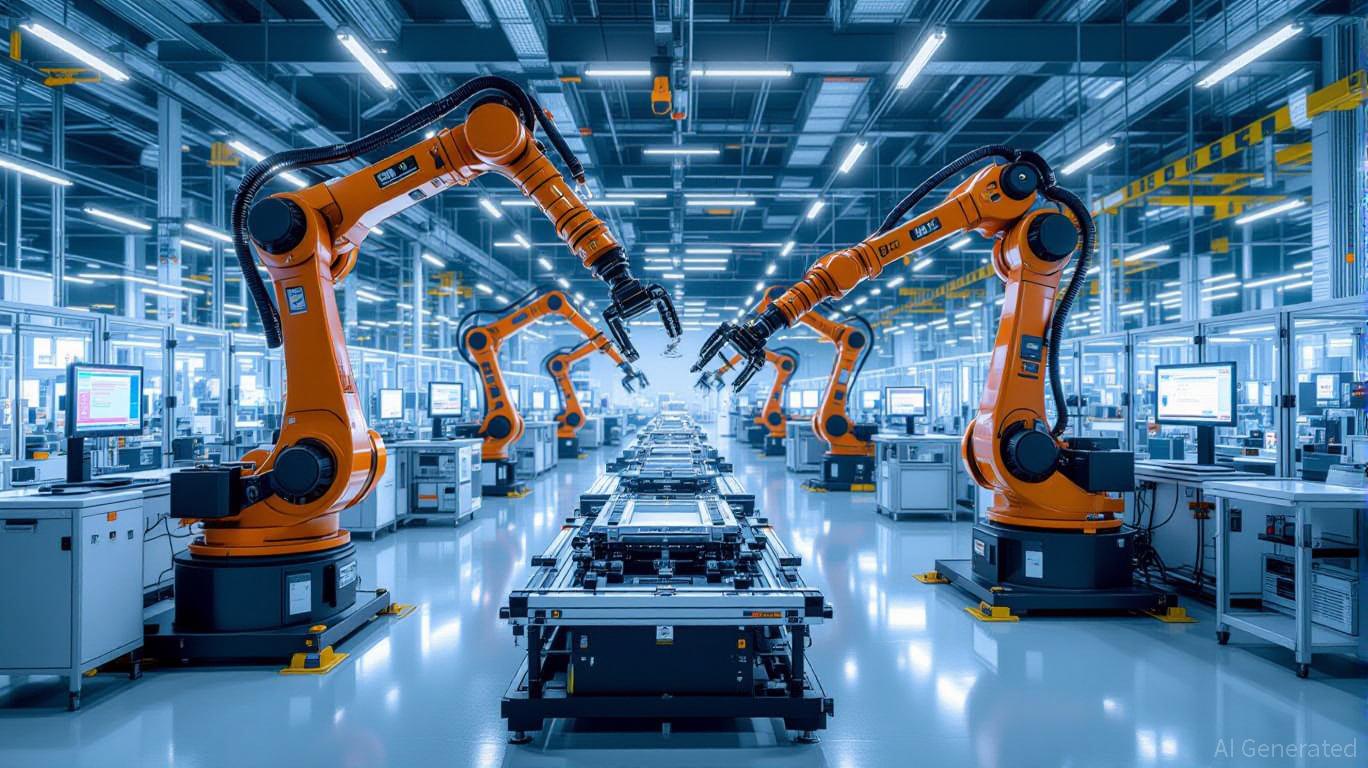Germany’s manufacturing sector, long a cornerstone of the eurozone’s largest economy, is showing early signs of escaping a prolonged cyclical stagnation. After years of headwinds—including energy price volatility, labor shortages, and global supply chain disruptions—the sector’s stabilization in Q2 2025 has sparked renewed optimism. Industrial output and export growth are accelerating, driven by strategic pivots in export-oriented firms, infrastructure modernization, and a shift toward automation and green technologies. For investors, this represents a compelling opportunity to capitalize on companies positioned to benefit from Germany’s industrial revival.
A Turning Point for the Manufacturing Sector
The German Manufacturing PMI rose to 49.0 in June 2025, the highest level in 34 months, signaling a critical inflection point. While still below the 50-mark threshold (indicating contraction), the data reflects a reversal of a multi-year downward trend. Production activity grew for the fourth consecutive month, fueled by robust export demand from the U.S. and Europe. A key driver has been pre-tariff stockpiling by U.S. buyers in anticipation of potential trade disputes, which has boosted orders for machinery, automotive components, and industrial goods.
Cost discipline has also played a role. Input costs fell for the third consecutive month, driven by lower energy prices and a stronger euro, allowing firms to reduce output prices and enhance competitiveness. Business confidence, meanwhile, reached its highest level since early 2022, buoyed by expectations of U.S.-EU trade negotiations and increased infrastructure spending.

Export-Driven Sectors: Machinery, Automotive, and Infrastructure
The machinery sector, which accounts for 20% of Germany’s industrial output, is a standout performer. Order backlogs surged 15% year-on-year, driven by U.S. demand and intra-Eurozone infrastructure projects. Firms like KUKA AG and TRUMPF are benefiting from the global shift to automation and Industry 4.0. KUKA, for instance, reported a 12% increase in robotics orders in Q2 2025, as automakers and EV manufacturers ramp up production.
The automotive sector is another growth engine. German firms supplying EV battery manufacturing equipment, such as Durr Group and Schuler AG, are securing contracts amid the global EV boom. Exports to the U.S. surged in Q2 2025 as automakers like BMW and Volkswagen expanded local production to avoid tariffs. The sector’s resilience is further supported by the EU’s push for a circular economy, which is driving demand for recycling and remanufacturing technologies.
Infrastructure firms are also gaining traction. Chancellor Friedrich Merz’s €500 billion infrastructure plan, including a €100 billion Climate and Transformation Fund, is accelerating investments in HVDC transmission lines, hydrogen pipelines, and smart grid technologies. Companies like Siemens Energy AG and Nordex SE are leading the charge in renewable energy integration and grid modernization.
Strategic Positioning and Structural Tailwinds
The German government’s relaxation of fiscal rules—allowing a €150 billion growth package—has created a favorable environment for industrial firms. The Climate and Transformation Fund is directly funding projects that align with Germany’s decarbonization goals, such as hydrogen infrastructure and smart grid technologies. These initiatives are creating long-term demand for machinery and automation solutions.
For example, ABB (though Swiss-based, a key player in German markets) reported a 19% EBITA margin in Q2 2025, driven by strong performance in Electrification and Process Automation. Its acquisition of Siemens Wiring Accessories in March 2025 expanded its smart building capabilities, aligning with the EU’s green agenda. Meanwhile, Universal Robots is gaining traction in SMEs with its collaborative robots (cobots), supported by government digitization incentives.
The robotics market in Germany is projected to grow at a 9.5% CAGR through 2033, reaching €45 billion. This is fueled by the automotive sector’s reliance on automation and the government’s support for SME digitalization. Firms like Yaskawa Electric and Universal Robots are well-positioned to benefit from this trend.
Risks and Cautions
Despite the optimism, risks remain. U.S.-EU trade tensions could disrupt export-dependent sectors, with a 10% tariff on German industrial exports potentially eroding 15% of sectoral profits. Geopolitical volatility, such as conflicts in the Middle East and ongoing Ukraine war disruptions, could also spike energy costs. Domestically, weak consumer spending (retail sales fell 3% year-on-year) remains a drag for firms reliant on the domestic market.
Investors should also monitor the performance of key indicators, such as the German Manufacturing PMI and industrial output data, to gauge the sustainability of the recovery.
Investment Thesis: Selective Exposure to High-Conviction Sectors
For investors seeking exposure to Germany’s manufacturing rebound, the focus should be on companies with:
1. Export diversification (e.g., firms with strong U.S. and Asian markets).
2. High-margin, technology-driven offerings (e.g., automation, EV supply chains).
3. Alignment with EU infrastructure and green initiatives (e.g., Siemens Energy, Nordex).
Conclusion
Germany’s manufacturing sector is at a pivotal moment. While challenges remain, the stabilization of industrial output, coupled with strategic positioning in export-driven and green sectors, presents a compelling opportunity for selective investors. Firms like KUKA, Durr, and Siemens Energy are not just navigating the current cycle—they are shaping the future of German industry. As the country’s policymakers and businesses align behind a vision of modernization and global competitiveness, the stage is set for a breakout in manufacturing equities.
For those willing to look beyond the noise of short-term volatility, Germany’s industrial revival offers a rare blend of macroeconomic tailwinds and sector-specific innovation—a recipe for long-term value creation.
